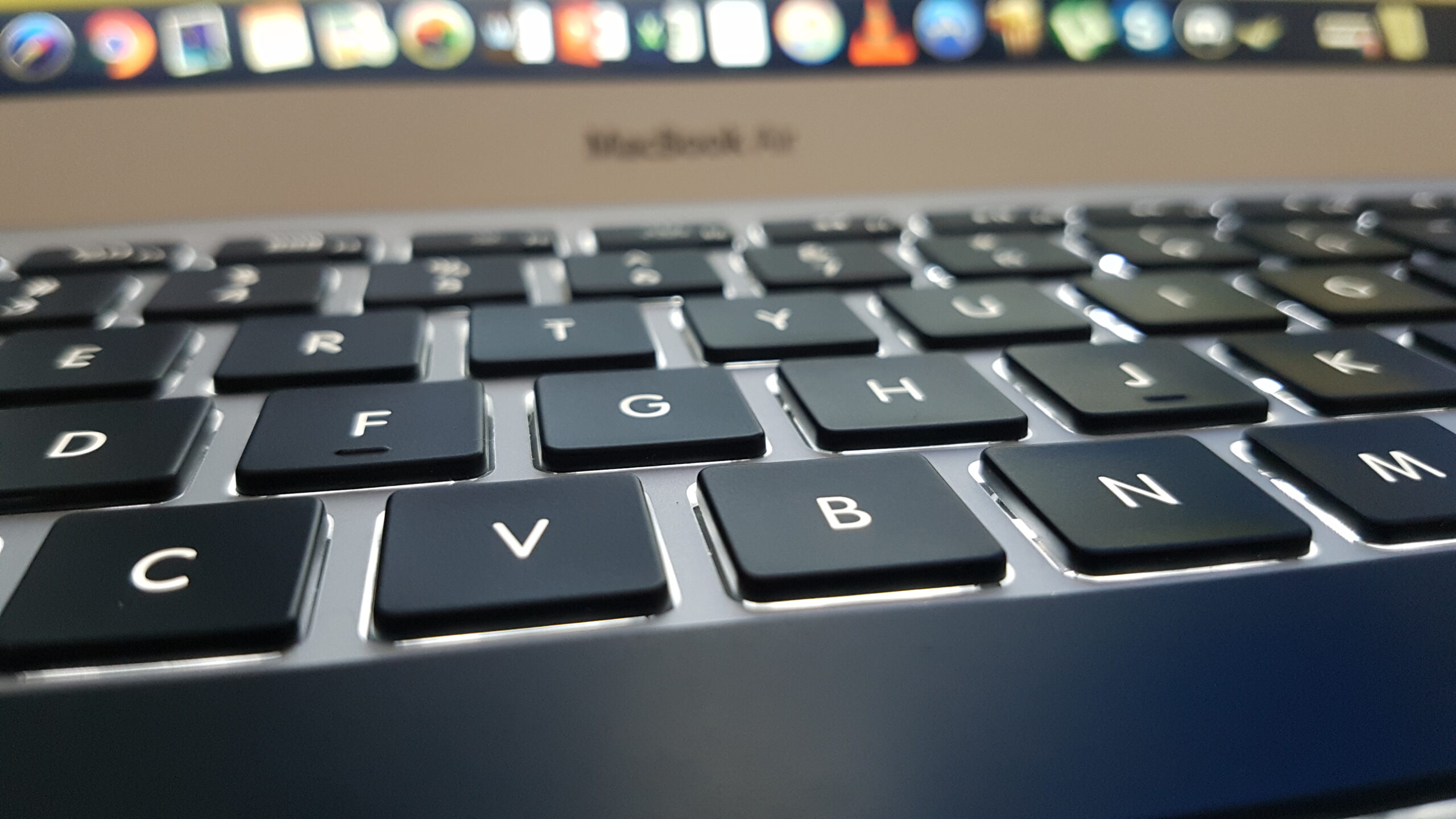Investigating Advancements in Metal 3D Printing Tech
The worldwide sector for 3D additive metal is forecasted to escalate to $7.9 billion by 2028. This exponential expansion is propelled by significant improvements in alloy 3D printing tech. These innovations are transforming how we manufacture intricate parts and structures. Fields such as aviation and medicine are at the forefront, harnessing 3D printing metal to create detailed, personalized parts with unequaled exactness.
This write-up delves into the advanced innovations driving this shift. It uncovers how metal 3D printing is profoundly altering production techniques. By investigating these innovations, we learn into the prospects of production and the vast potential of this innovation.
Grasping Alloy 3D Printing
Alloy 3D printing is revolutionizing the production sector by allowing the production of intricate alloy parts with unmatched exactness and flexibility. This technology facilitates for the sequential fabrication of intricate pieces, providing notable gains over conventional techniques.
What is Metal 3D Printing?
Alloy 3D printing, or metal 3D printing, employs multiple technologies to produce metal parts. A 3D printer metal printing machine works by placing matter incrementally, immediately from computer models. This method facilitates the creation of intricate shapes and tailored layouts.
The Development of Metal 3D Printing
The history of alloy 3D printing commenced in the end of the 20th century with early designs of basic layouts. Over the decades, advancements have increased its potentials, moving from simple designs to cutting-edge components. Currently, alloy 3D printing is employed in aerospace, vehicle, and healthcare fields, due to ongoing developments.
Key Benefits of Metal 3D Printing
Employing a metal 3D printing machine provides multiple gains over conventional fabrication methods. These involve:
- Flexibility: The capacity to produce complicated forms and detailed shapes that classical methods cannot achieve.
- Minimized Material Loss: Alloy 3D printing utilizes substance efficiently, minimizing waste during the fabrication technique.
- Personalization: Effortlessly manufacture tailored parts, facilitating quick model development and bespoke products across diverse uses.
- Pace: Speedier manufacturing times from concept to final product, streamlining the manufacturing process.
These benefits make alloy 3D printing a compelling option for businesses aiming to innovate and enhance their fabrication potentials.
The Development of Alloy 3D Printing Technologies
The development of alloy 3D printing has been remarkably exceptional, transitioning from rudimentary beginnings to the cutting-edge techniques we now observe. This path has centered around improving the sophistication of *metal 3D printed pieces*, refining the utilization of *3D printing metal powder*, and extending the availability of *metal 3D printing solution* businesses.
Initial Advancements
At its beginning, alloy 3D printing was marked by trial methods and a restricted variety of substances. The initial major advancements were SLM and electron beam melting. These techniques set the stage for more stable manufacturing of metal pieces. Initial users leveraged these methods to produce complex forms that conventional manufacturing techniques couldn’t accommodate.
Current Trends in Technology
Currently, the advancements in alloy 3D printing are reshaping fabrication. The focus is on hastening printing methods, optimizing material properties, and reducing costs. The production of advanced *3D printing alloy powder* has made it possible to produce strong and exact *metal 3D printed parts*. Furthermore, the growth of *metal 3D printing solution* companies has rendered sophisticated production available to firms of all types.
Powder Bed Fusion Techniques in Metal 3D Printing
PBF technologies have transformed metal 3D printing, offering excellent precision and outstanding substance compactness. This technique uses a electron beam to melt fine metal powders, including the advanced metal powder bed fusion technology. It is proficient in creating complicated shapes that traditional fabrication methods cannot accomplish.
Two primary PBF techniques are prominent: SLM and Direct Metal Laser Sintering. Each offers distinct benefits and is vital in industries like space, automotive, and healthcare fabrication.
- Selective Laser Melting: Using a powerful laser, it entirely binds the metal powder, producing parts with outstanding mechanical properties.
- DMLS: This method uses a beam to specifically bind powder particles, perfect for manufacturing parts with complex internal structures and superior detail.
Direct metal laser sintering is preferred for detailed designs and quick model development, providing productivity without forgoing precision. Although Powder Bed Fusion methods present high costs and extended manufacturing rates, their accuracy and material utilization are fueling their use across fields.
Here is a in-depth examination:
| Element | SLM | Direct Metal Laser Sintering |
|---|---|---|
| Laser Type | Powerful laser | Laser beam |
| Material Efficiency | High | Average to Superior |
| Usage Flexibility | Highly flexible | Extremely versatile |
| Main Industries | Aviation, Car, Medicine | Aviation, Automotive, Medical |
| Standard Materials | Al, Ti, Stainless Steel | Aluminum, Ti, Steel |
Both alloy powder bed fusion methods are developing, guaranteeing increased efficiency and material capabilities. As tech progresses, the promise of PBF in metal 3D printing is set to expand, fueling progress across various sectors.
Uses of Laser Sintering
SLM has changed the metal 3D printing field, providing unmatched accuracy and adaptability. It enables the creation of intricate constructions with effortlessness. This part examines how Laser Sintering is utilized across different industries, showcasing its notable influence.
Laser Sintering in Space Field
In aerospace, SLM is vital for making detailed engine pieces such as rotor blades and fuel injectors. It allows for substantial weight savings while ensuring stability. This produces more efficient and lighter aircraft.
By improving fuel efficiency and reducing pollution, Selective Laser Melting complements environmental objectives in the space field.
Uses in Medicine of Laser Sintering
The medical sector significantly profits from SLM, particularly in creating custom medical devices and artificial limbs. Doctors can now develop devices tailored to individual individuals, providing a enhanced comfort and functionality. This results in improved patient results.
Personalized prosthetics, such as those for skeletal and tooth requirements, are made to match the individual structure of each patient. This shows the adaptability of metal 3D printing in enhancing healthcare.
| Sector | Applications | Gains |
|---|---|---|
| Aviation | Engine pieces, rotor blades, fuel nozzles | Weight savings, enhanced fuel efficiency, better performance |
| Medicine | Tailored medical devices, prosthetics | Personalized patient care, enhanced fit and operation, decreased recovery time |
Gains of Electron Beam Melting
Electron Beam Fusion is a cutting-edge method in alloy 3D printing. It uses a intense electron ray to bind metal powder in a vacuum chamber. This process delivers multiple key gains.
Decreasing Oxidative Degradation:
One notable benefit of Electron Beam Melting is its vacuum operation, which significantly reduces material oxidation. This is crucial for materials like Ti and its compounds. These are crucial in aerospace and medicine implants due to their sensitivity.
Augmented Substance Traits:
Functioning in a vacuum chamber not only keeps the material pure but also improves its material traits. EBM-produced parts often show improved tensile strength and endurance. These properties are essential for implementations under intense pressure.
Complex Design Capabilities:
Electron Beam Melting is proficient in producing complex designs and intricate forms. The precision of the beam of electrons enables precise and tailored parts. This is beyond what classical manufacturing can achieve.
| Element | Benefit |
|---|---|
| Oxidation Minimization | Reduced oxidation resulting from vacuum operation |
| Material Purity | Augmented because of vacuum environment |
| Material Traits | Improved material strength and durability |
| Design Adaptability | Capability to manufacture intricate and customized components |
EBM’s employment of beams of electrons in a vacuum results in excellent metal components. These parts have reduced material oxidation and superior material traits. This turns Electron Beam Fusion crucial in industries requiring exactness and durability, such as aviation and medical equipment manufacturing.
Pioneering Laser-Based Sintering
Direct Metal Laser Sintering has changed the metal 3D printing sector. It utilizes a intense beam to bind metallic powder sequentially, creating complex components without conventional patterns. This technique is exceptional for its accuracy and productivity.
DMLS Material Requirements
For DMLS, materials must satisfy precise criteria for maximum performance. Primary substances involve aluminum, titanium, stainless steel, and cobalt-chrome compounds. These substances demand fine powder consistency, enhanced thermal properties, and extreme heat resistance to endure the powerful beam energy.
- Consistent Granules: The metallic particles must be consistently shaped and designed for accurate binding.
- Heat Characteristics: Substances must efficiently conduct and conduct heat to solidify and stabilize properly.
- High Melting Points: Providing stability during the fusion process eliminates defects.
Differences between DMLS and Conventional Manufacturing
When juxtaposing Laser-Based Sintering to conventional production, Direct Metal Laser Sintering offers clear benefits. It can create complex geometries, minimize material waste, and greatly reduce production cycles. For intricate layouts and prototypes, DMLS delivers unparalleled versatility and exactness.
| Factor | DMLS | Conventional Manufacturing |
|---|---|---|
| Complex Geometry | Excellent | Limited |
| Material Waste | Reduced | Substantial |
| Production Time | Short | Lengthy |
| Tailoring | Extremely Adaptable | Restricted |
By embracing DMLS, fields can achieve substantial productivity and improvements in product innovation and fabrication. This technology is initiating a modern epoch of progress.
Future of Energy-Based Deposition
Looking to the future, Direct Energy Deposition is expected to change fabrication. Its potential for rapid material placement and the potential to augment or fix components signifies a notable change. This technology is set to profoundly influence industries like heavy industry and energy.
Direct Energy Deposition facilitates the refurbishment of parts that have worn out, thus extending the lifespan of crucial equipment. This is especially valuable in fields dependent on industrial machines, where replacement components can be both lengthy and expensive.
The adaptability of Energy-Based Deposition in managing multiple metals turns it into a optimal solution for customized fabrication outcomes. It provides precision and effectiveness to the table, creating new avenues in product design and engineering.
Here’s a comprehensive analysis of the advantages Direct Energy Deposition offers in different sectors:
| Industry | Advantages of Direct Energy Deposition |
|---|---|
| Large-Scale Manufacturing | High deposition rates, restoration and repair abilities |
| Power | Upkeep, prolonged component durability, and expense savings |
| Aviation | Bespoke fabrication, less heavy pieces, accuracy |
| Medicine | Superior exactness, biocompatible materials, rapid prototyping |
In conclusion, the development in Direct Energy Deposition heralds a positive future. It offers to boost production effectiveness and enhance resource efficiency, maintaining Energy-Based Deposition at the forefront of manufacturing innovation.
Metal 3D Printing Breakthroughs in Automotive Sector
Alloy 3D printing is changing the car field, offering new innovations to vehicle design and manufacturing methods. This innovation facilitates the production of tailored components, transforming conventional production techniques.
Influence on Auto Design
Automotive designers now leverage metal 3D printing to craft intricate and reduced-weight components. This flexibility allows for the production of distinct pieces that boost auto performance and appearance. Notably, complicated forms that were once unfeasible or high-priced are now achievable.
Enhancements in Production Efficiency
3D printing tech greatly improves fabrication efficiency in the automotive industry. It cuts the demand for several assembly stages, simplifying manufacturing sequences and minimizing scrap and production durations. Additionally, quick model development is made possible, allowing faster revisions and quicker product launch for novel items.
The advantages of 3D printing in car pieces are evident: enhanced accuracy and minimized material consumption. These advantages lead to notable cost savings and operational efficiency across the sector.
Binding Technology: A Pivotal Leap in Metal Printing
Binding Technology signifies a significant advancement ahead alloy 3D additive manufacturing, delivering various benefits for industrial use. This process, which places a 3D printing metal binder sequentially, substantially reduces manufacturing duration over classical techniques. Its cost-effectiveness stands out, attractive to manufacturers aiming to reduce costs without compromising precision.
Yet, it’s crucial to recognize specific constraints. Initial components may show reduced compactness and resilience. To alleviate this, additional techniques like fusion can be applied. These steps boost material characteristics, matching them with those attainable through other alloy 3D fabrication methods.
Even with these trade-offs, Binding Technology’s gains, especially in terms of velocity and expense, are substantial. By adopting a 3D printing metal adhesive into their techniques, firms can attain considerable productivity. This turns them at the leading edge of fabrication advancement.
Growth with Large-Scale Metal 3D Printing Devices
Novel large format alloy 3D printing devices are revolutionizing the manufacturing of complicated, large-scale pieces across fields. These printing devices offer significant promise but also pose unique hurdles. Tackling these challenges is crucial to entirely utilize their capabilities.
Obstacles in Large-Scale Printing
One notable obstacle with large format metal 3D printing devices is keeping accuracy over big areas. As fabricated pieces grow in volume, ensuring uniform quality and strength becomes more challenging. Extended fabrication periods for large components also introduce factors that challenge the production process.
- Accuracy and Exactness: Guaranteeing exactness over more extensive spaces is complicated, often requiring sophisticated adjustment and supervision processes.
- Printing Velocity: Bigger structures take longer to fabricate, which heightens the risk of errors and the requirement for improved supervision measures.
- Material Handling: Processing the big amounts of material or printing substance needed for these fabricated pieces brings organizational obstacles in material warehousing and processing.
Sectors Gaining from Large-Scale Printing
Multiple fields will significantly profit from large-scale metal 3D printers, especially those needing big, complex components. The capacity to 3D produce big components on-demand delivers notable operational and economic advantages.
| Field | Gains | Uses |
|---|---|---|
| Construction | Decreased fabrication periods, Tailoring | Architectural elements, Architectural frameworks |
| Shipbuilding | In-situ production, Expense savings | Boat hulls, Engine components |
| Oil & Gas | Robust piece manufacturing, Shorter idle periods | Pipe components, Drilling equipment |
These illustrations demonstrate the broad potential implementations of big metal 3D printers across various fields. As innovation progresses, it will be exciting to witness how 3D printing big structures will additionally revolutionize these sectors.
Advancements in Materials in Alloy 3D Printing
The alloy 3D additive manufacturing industry is developing rapidly, propelled by breakthroughs in substances. Innovative material granules and combinations are driving this progression, significantly enhancing the tech’s potentials and implementations. Worldwide firms are pouring funds into innovation to uncover novel alloys for multiple industrial uses.
A major advancement in 3D additive manufacturing alloys progress is the emergence of custom alloys. These alloys boast augmented strength, heat tolerance, and anti-corrosion properties. Such developments are vital for fields like aviation, car, and medical industry, where robustness and operation are of utmost importance. Furthermore, customizing these alloys for specific needs provides unparalleled adaptability and efficiency in manufacturing.
To illustrate the breadth and benefits of material innovations in alloy 3D printing, review the table below, which details notable innovations and their applications:
| Advancement in Materials | Key Properties | Production Needs |
|---|---|---|
| Ti Alloys | Reduced weight, superior durability, oxidation resistance | Aerospace, medical equipment |
| Nickel Superalloys | Thermal stability, durability | Energy production, automotive, aerospace |
| Aluminum Alloys | Low density, oxidation resistance | Automotive, space |
| Stainless Steel | Durability, hardness, corrosion resistance | Healthcare equipment, food processing, vehicle |
These examples demonstrate the significant impacts of material innovations on 3D additive manufacturing alloys progress. As these breakthroughs advance, they are expected to transform classical production, enabling complicated geometries and tailored material properties.
Custom Metal Parts: Revolutionizing Production
The ability to produce personalized alloy components through 3D printing is changing fabrication. This tech offers unmatched 3D fabrication tailoring potentials. It allows fields to manufacture complicated layouts and tailored components readily.
Personalization Abilities
3D additive manufacturing personalization delivers a significant benefit by enabling parts personalized to specific requirements. Unlike classical techniques, 3D additive manufacturing enables rapid prototyping and modifications. This flexibility is essential for sectors needing precision and uniqueness in their pieces.
- Design Freedom: 3D additive manufacturing facilitates complicated shapes and complex patterns that are hard to attain with traditional techniques.
- Quick Model Development: Facilitates rapid shift from concept to model, producing speedier versions and a decreased time-to-market.
- Cost-Effective Production: Reduces material loss and resource expenditures by creating only what is demanded.
Industries Utilizing Custom Metal Parts
Multiple fields are employing custom metal pieces through 3D additive manufacturing personalization to enhance their outcomes and techniques:
- Healthcare: Tailored alloy components are used to manufacture individualized implants and replacement parts, enhancing compatibility and performance.
- Car: Fabricators employ 3D fabrication to produce less heavy, durable parts that enhance auto operation and fuel efficiency.
- Consumer Items: Firms can create unique products tailored to particular desires, providing a one-of-a-kind selling point to customers.
The incorporation of personalized alloy components and 3D additive manufacturing personalization is leading multiple sectors into a novel epoch of production advancement and effectiveness.
Economic Impacts of Alloy 3D Additive Manufacturing Service Offerings
Alloy 3D printing services are revolutionizing manufacturing with their adaptability and expense reduction. They greatly lower decrease investment and production durations, associated with classical production. This allows for the rapid and cost-effective creation of complicated metal parts, hastening innovation cycles.
One key gain of alloy 3D printing is its minimized waste. Classical processes often produce substantial material waste. In contrast, 3D printing places material incrementally, reducing waste. This not only cuts manufacturing expenses but also has a favorable environmental impact.
Expense reductions are another benefit, thanks to the ability to produce components on demand. This approach eliminates the demand for extensive stocks, releasing money for other ventures. It’s especially beneficial for fields needing custom or small-batch pieces, like aviation and medical fields.
The economic impact of alloy 3D additive manufacturing also encompasses workforce expansion. As demand for these solutions expands, so does the demand for skilled workers. These jobs include managing 3D printing devices, processing final touches, and quality control. This expansion supports the employment sector and aids in financial growth.
These advantages are obvious when comparing classical production to metal 3D fabrication:
| Aspect | Traditional Manufacturing | Metal 3D Printing |
|---|---|---|
| Initial Funding | Significant | Low |
| Production Duration | Long | Short |
| Material Waste | High | Reduced |
| Customization | Limited | High |
The financial influence of alloy 3D printing is also evident in its market edge. Companies using these offerings can swiftly bring items to market, adapting quickly to consumer demands and developments. This flexibility is crucial in the modern quick-moving economic environment.
The growth of alloy 3D additive manufacturing offerings is reshaping economic models, facilitating more efficient, economic, and creative production methods. As this tech progresses, its economic impact will expected to grow, more transforming business strategies and economic trends.
Eco-Friendly Approaches in Metal Fabrication
The shift towards green methods is crucial in the modern fast-paced industrial world. Metal additive manufacturing leads this shift, offering approaches that greatly reduce material loss and fuel usage. It facilitates a more efficient material management, from planning to final product phase.
One key advantage of metal additive manufacturing is its minimized waste. Traditional methods often lead to notable scrap, discarding excess material to create the final product. Eco-friendly fabrication, however, produces items layer by layer, using only what’s required. This technique saves materials and makes the manufacturing method greener, with less green effect.
Power savings is vital for manufacturers aiming to implement sustainable methods. Metal additive manufacturing methods are generally more fuel-economical than traditional methods. The exactness of eco-friendly fabrication minimizes the need for multiple production steps, thus cutting energy use. Plus, local production with metal fabrication machines can minimize the ecological footprint from logistics and distribution, boosting eco-friendly approaches.
To sum up, metal additive manufacturing is initiating a sustainable industrial future. By embracing green additive manufacturing, sectors can advance while protecting the earth. As this tech evolves, it offers even more productivity and a smaller ecological impact. This highlights the need for these approaches in current fabrication.



